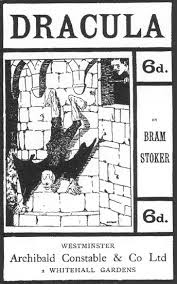1959 Psycho: Robert Bloch
Psycho
now tends to mean the famous film by Alfred Hitchcock made in 1960 with Anthony
Perkins and Janet Leigh. The famous “murder in the shower” scene with the
electrifying music of Bernard Herrmann remains an iconic series of images in
popular culture.
The film is based on the book Psycho by Robert Bloch (1917-1994), which was published in New York
by Simon and Schuster in 1959 and in London by Robert Hale in 1960. Block had a
long history of writing tales with supernatural content and was part of the
circle of H.P. Lovecraft and a regular contributor to Weird Tales. He wrote hundreds of stories and more than 30 novels
during a long career which started in 1935. Late in his life he wrote The Jekyll Legacy, a sequel to
Stephenson’s famous novel.
First editions of Psycho
are becoming increasingly hard to find. Collectors would be happy with either
the American or English first edition. The New York edition in very good
condition in dust wrapper will cost around $1000; the London edition about half
that price. Both of these books are shown below.
An American first edition signed by Janet Leigh can be
had for $5000.






















